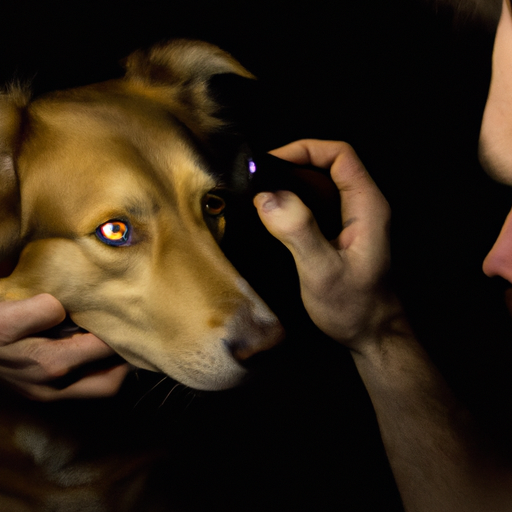As a loving pet owner, one of your biggest concerns is your dog’s health. Sometimes, you may notice something off about your dog’s eye, leaving you worried and asking, “What’s wrong with my dog’s eye?” This article will delve into some of the most common eye problems in dogs, how to identify them, and when to seek professional help.
Table of Contents
- Common Eye Problems in Dogs
- Identifying Eye Problems
- When to Seek Professional Help
- Preventing Eye Problems
- Frequently Asked Questions
Key Takeaways
- Be aware of common eye problems in dogs.
- Know how to identify these issues.
- Understand when it’s time to seek professional help.
- Learn how to prevent eye problems in your dog.
Common Eye Problems in Dogs
There are several common eye problems that can affect dogs, each with their distinct symptoms.
Conjunctivitis
Also known as pink eye, conjunctivitis is an inflammation of the conjunctiva, the tissue that lines the inner surface of the eyelid and the white part of the eye. It can be caused by allergies, foreign bodies, or bacterial or viral infections. Symptoms include redness, discharge, squinting, and frequent blinking.
Cherry Eye
This condition is a prolapse of the gland of the third eyelid, causing a red mass to protrude from the eye. Cherry eye is common in young dogs and certain breeds like the Bulldog, Cocker Spaniel, and the Beagle.
Cataracts
Cataracts are an opacity in the lens of the eye, causing it to appear cloudy or blue. They can lead to blindness if left untreated, but surgical removal is usually successful.
Glaucoma
Glaucoma is a condition characterized by increased pressure within the eye. This can cause pain, redness, and can lead to blindness.
Dry Eye
Also known as Keratoconjunctivitis Sicca (KCS), this is a condition where the eye doesn’t produce enough tears, leading to dryness and irritation.
For a more comprehensive list of common dog eye problems, you can visit this link.
Identifying Eye Problems
Now that you know the common eye problems, you should learn to identify them. Pay attention to the following signs:
- Excessive tearing or discharge
- Redness or swelling
- Frequent blinking or squinting
- Pawing at the eye
- Change in eye color
If you notice any of these signs, it’s important that you take your dog to a vet immediately. One Top Dog offers some excellent tips on how to handle such scenarios.
When to Seek Professional Help
While it’s normal for dogs to have occasional eye discharge or tears, persistent symptoms or sudden changes should not be ignored. If you’ve noticed the signs mentioned above, it’s time to seek professional help. A licensed vet can accurately diagnose and treat your dog’s eye problem.
Vets have specialized equipment, like a slit lamp or tonometer, to examine your dog’s eye thoroughly. They can also prescribe medications or recommend surgery if necessary.
For advice on how to choose a good vet, check out this helpful guide.
Preventing Eye Problems
Preventing eye problems in dogs involves regular grooming and observation. Here are some tips:
- Keep your dog’s face clean. Use a damp cloth to gently wipe around their eyes to remove any dirt or discharge.
- Trim the hair around their eyes. Excess hair can irritate the eyes and lead to problems.
- Provide a balanced diet. Certain nutrients, like vitamin A and omega-3 fatty acids, can help maintain eye health.
- Avoid exposing your dog to irritants. Smoke, dust, and certain plants can irritate your dog’s eyes.
For more tips on dog grooming, visit this page.
Frequently Asked Questions
1. Can I use human eye drops on my dog?
No, you should not use human eye drops on your dog unless instructed by a vet. Some human eye drops can be harmful to dogs.
2. How can I clean my dog’s eyes at home?
You can clean your dog’s eyes using a clean, damp cloth. Gently wipe around the eyes, taking care not to touch the eyeball.
3. How often should I check my dog’s eyes?
You should check your dog’s eyes daily for any signs of redness, discharge, or discomfort.
Remember, your dog’s eyes are a window to their health. Regular check-ups, early detection, and treatment of eye problems can help ensure your furry friend keeps seeing the world clearly. For more dog health tips, visit One Top Dog.



